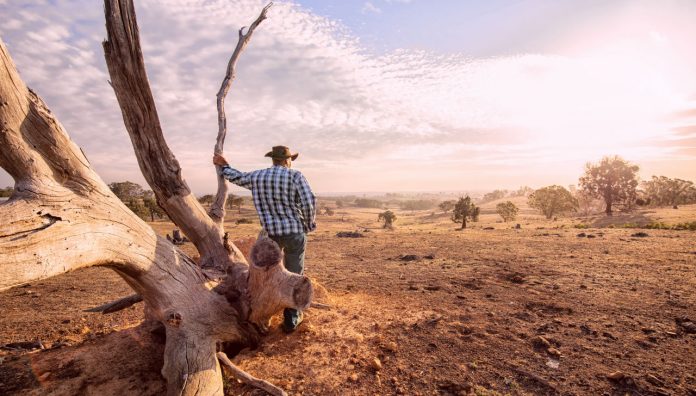Recent research has predicted by 2026 there could be just 52 pharmacists per 100,000 people in rural and remote areas, compared with more than double that number in cities. But the solutions are far from straightforward.
The struggles faced by rural pharmacists came under close scrutiny at a PSA19 forum on Sunday, as those at the coalface traded tales of their challenges and the methods they employ to mitigate them.
Fred Hellqvist, a pharmacy owner in Dover, Tasmania and co-chair of Rural Pharmacy Network Australia, told the forum rural pharmacy was being squeezed from multiple angles.
‘We all know rural and remote pharmacies already have great difficulty recruiting and retaining pharmacists,’ he said.
‘However, not only are pharmacists generally less willing to work in rural, remote, far areas, but when they are, they demand higher hourly rates, additional income opportunities, and other retention incentives such as housing, transport, and family support, as well as additional paid leave.
‘Pharmacy owners are often struggling to cope with this situation when most clinical services that we are performing are either inadequately remunerated for the time and resources involved, or they’re not currently remunerated at all.’
Mr Hellqvist said rural pharmacies generally operate in lower socioeconomic areas with a higher proportion of patients with multiple chronic diseases, lower health literacy and less access to adequate healthcare.
‘This means that they’re most likely unable to pay for specific services and are, therefore, more reliant on subsidised services,’ he said.
‘This creates an increased demand on local pharmacy and pharmacists to provide unremunerated or, in other terms, zero-out-of-pocket healthcare services.
‘As a result, rural and remote pharmacies or pharmacists are spending more time attending to patients’ general health needs and collaborating with other healthcare professionals without proper remuneration.’
However, there are signs of a renewed broad interest in rural health. Last year, the Royal Flying Doctor Service released its Looking Ahead: Responding to the Health Needs Of Country Australia in 2028 – The Centenary Year of the RFDS report, which predicted that rural and remote areas will have fewer than half the number of pharmacists than metropolitan areas (52 as compared to 113 per 100,000 population).1
Meanwhile, the National Rural Health Commission is currently calling for submissions on its Rural Allied Health Quality, Access and Distribution white paper, closing on 7 August.2
The paper’s focus is on addressing the ‘significant maldistribution of many health professionals in Australia, including allied health providers, which results in much poorer access to services for rural people, negatively impacting their health, wellbeing and economic participation’.
It canvasses options for building a more sustainable rural allied health workforce, as well as utilising tools such as telehealth to increase access to healthcare.2
National Rural Health Commissioner Policy Officer and pharmacist James Hewison, who also spoke at PSA19, urged the pharmacy profession to have their say.
As well as creating a Chief Allied Health Officer position within the Federal Health Department to provide a high-level voice for rural allied health, it also proposes a rural allied health college to facilitate a national rural generalist allied health training and workforce framework.
‘Third, it suggests the ongoing development of a national allied health data set to inform workforce planning and policy development,’ Mr Hewison said.
‘Because if we don’t know who’s out there doing the work, we can’t make informed decisions about how we make things better.’
Mr Hewison said the idea of a rural generalist pharmacist acknowledged that practitioners need to operate in an extended scope of practise because rural towns are generally small.
‘As such, they cannot achieve critical mass for a full range of specialist services delivered by individual practitioners, so this means additional training for the workers in that area. It means transprofessional practise,’ he said.
‘We’re seeing some promising support in the form of WA Health’s recent review of community pharmacy ownership, which suggests an extended role for pharmacists. It suggests an integrated healthcare model, and proposes the pharmacist’s role in immunisation services could be expanded, that they could provide additional support for mental health.
‘Most controversially, it suggests that [pharmacists] could prescribe for chronic diseases such as asthma and diabetes, which you might argue they are already trained and qualified to do, and I’d agree with you. The other side of that argument involves rural areas that don’t have a local pharmacy service. What then? Do we share some of the responsibility for dispensing? Perhaps if we did, the pharmacist’s role would be supervision of support and training,’ Mr Hewison said.
View the National Rural Health Commission report here.
References
- Gardiner FW, Gale L, Ransom A, Laverty M. Looking ahead: Responding to the health needs of country Australia in 2028 – the centenary year of the RFDS. Royal Flying Doctor Service, August 20918. At: https://www.flyingdoctor.org.au/assets/documents/RN064_Looking_Ahead_Report_D3.pdf
- National Rural Health Commissioner. Discussion Paper for Consultation: Rural Allied Health Quality, Access and Distribution. At: https://www1.health.gov.au/internet/main/publishing.nsf/Content/815AFEED0337CF95CA2581D30076D095/$File/NRHC-Rural-Allied-Health-Options-Discussion-Paper-2019.pdf



 Dr Peter Tenni[/caption]
Dr Peter Tenni[/caption]
 How should we deprescribe gabapentinoids, according to the Maudsley Deprescribing Guidelines[/caption]
How should we deprescribe gabapentinoids, according to the Maudsley Deprescribing Guidelines[/caption]



 Pharmacists have always prescribed, but they have the potential to prescribe much more
Pharmacists have always prescribed, but they have the potential to prescribe much more





